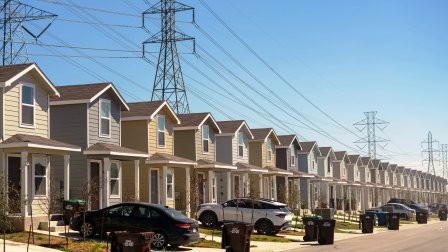Affordable housing is a vital component of a just and equitable society. In the United States, the need for affordable housing has become increasingly urgent as housing prices continue to outpace wage growth. This article explores the significance of affordable housing, the challenges faced in its provision, innovative solutions, and successful case studies from across the country.
Understanding Affordable Housing
In the U.S., affordable housing typically refers to housing that costs no more than 30% of a household’s gross income. This threshold ensures that families can afford other essential needs such as food, healthcare, transportation, and education. Affordable housing can include a variety of housing types, such as rental apartments, single-family homes, and cooperative housing.
The Importance of Affordable Housing
- Economic Stability: Affordable housing reduces financial stress on families, allowing them to allocate resources to other critical areas, such as education and healthcare. This, in turn, fosters economic stability and upward mobility.
- Health and Well-being: Safe and stable housing is closely linked to better health outcomes. Families in affordable housing are less likely to experience homelessness, overcrowding, and exposure to environmental hazards.
- Social Equity: Affordable housing promotes social equity by providing low and moderate-income families with access to high-quality neighborhoods, schools, and services. It helps prevent the concentration of poverty and fosters diverse, inclusive communities.
Challenges in Affordable Housing
- High Construction Costs: The cost of land, labor, and materials has skyrocketed, making it difficult to build affordable housing. Developers often find it more profitable to focus on luxury housing.
- Insufficient Funding: Federal and state funding for affordable housing has not kept pace with the growing need. Budget cuts and competing priorities have strained resources.
- Regulatory Barriers: Zoning laws, building codes, and other regulations can inhibit the development of affordable housing. These barriers often favor single-family homes and large-lot developments.
- NIMBYism (Not In My Backyard): Community opposition to affordable housing projects, driven by concerns about property values and neighborhood character, can delay or prevent development.
Innovative Solutions for Affordable Housing
- Inclusionary Zoning: This policy requires or incentivizes developers to include affordable units in new residential projects. Cities like New York and San Francisco have successfully implemented inclusionary zoning to increase the supply of affordable housing.
- Public-Private Partnerships (PPPs): Collaborations between government agencies and private developers can leverage resources and expertise to create affordable housing. PPPs can provide financing, land, and technical support.
- Community Land Trusts (CLTs): CLTs are nonprofit organizations that acquire and manage land to provide affordable housing. By separating land ownership from housing ownership, CLTs can ensure long-term affordability.
- Innovative Construction Techniques: Methods such as modular and prefabricated construction can reduce costs and expedite the building process. These techniques allow for the rapid production of affordable housing units.
- Subsidies and Tax Credits: Federal programs like the Low-Income Housing Tax Credit (LIHTC) provide financial incentives for developers to create affordable housing. State and local subsidies can also bridge funding gaps.
- Adaptive Reuse: Repurposing underutilized or vacant buildings for affordable housing is an efficient way to increase supply. Examples include converting former hotels, office buildings, and warehouses into residential units.
- Micro-Housing and Co-Living: These innovative housing models maximize space efficiency and offer affordable living options in high-demand urban areas. They cater to individuals and small households seeking affordable accommodations.
Successful Case Studies
- New York City, New York: New York City has implemented a range of policies to address its affordable housing crisis. The city’s Housing New York plan aims to create and preserve 300,000 affordable units by 2026. Key strategies include inclusionary zoning, tax incentives, and the preservation of existing affordable housing stock.
- San Francisco, California: San Francisco’s inclusionary housing program requires developers to provide affordable units or pay fees to support affordable housing. The city also leverages public land for affordable housing projects and offers density bonuses to incentivize development.
- Minneapolis, Minnesota: Minneapolis made headlines by eliminating single-family zoning, allowing for the development of multi-family housing throughout the city. This zoning reform is expected to increase the supply of affordable housing and promote more inclusive neighborhoods.
- Portland, Oregon: Portland’s Affordable Housing Bond Program, approved by voters in 2016, allocates funds for the construction and preservation of affordable housing. The program prioritizes projects that serve the most vulnerable populations, including families with children, seniors, and people with disabilities.
The Role of Policy and Advocacy
Effective policies and advocacy are crucial for addressing the affordable housing crisis in the U.S. Key policy measures include:
- Increased Funding: Federal, state, and local governments must increase funding for affordable housing programs. This includes direct subsidies, tax credits, and grants to support construction and preservation.
- Zoning Reforms: Cities and states should reform zoning laws to allow for higher-density development and the creation of affordable housing in all neighborhoods. This includes eliminating single-family zoning and promoting mixed-use development.
- Tenant Protections: Strengthening tenant protections, such as rent control and eviction prevention measures, can help maintain housing stability for low-income families.
- Community Engagement: Engaging communities in the planning process is essential for building support for affordable housing projects. Transparent and inclusive processes can address concerns and foster collaboration.
Conclusion
Affordable housing is a cornerstone of a just and equitable society. While the challenges are significant, innovative solutions and collaborative efforts can pave the way for a future where everyone has access to safe, stable, and affordable housing. By prioritizing affordable housing and implementing effective policies, the United States can build resilient communities where all residents have the opportunity to thrive.
